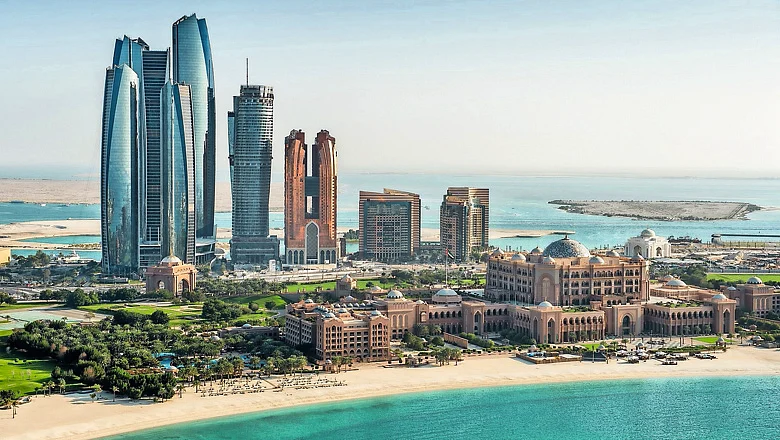
Abu Dhabi Real Estate Market Shows Resilience And Growth Amid Global Uncertainty
Abu Dhabi's real estate market delivered a robust performance in the first half of 2025, defying global economic headwinds and cementing its position as a safe-haven for long-duration capital.
According to Driven Properties' H1 2025 report, the emirate's property sector benefited from fiscal discipline, infrastructure-led development, and increasing institutional interest.
Recommended For YouResidential prices: A market in maturation
Abu Dhabi's residential sector continued its upward trajectory, with both off-plan and ready properties showing strong performance and signs of convergence.
Off-plan properties: Prices surged from Dh487 per square foot in H1 2019 to a peak of Dh1,350 per square foot in H1 2024, before easing to Dh1,127 per square foot in H1 2025. This moderation reflects more realistic pricing strategies by developers, aligned with delivery timelines and market saturation. However, official data may understate actual resale values, as the Abu Dhabi Municipality records only original launch prices, not secondary market premiums - meaning the resale market is likely stronger than reported.
Ready properties: Prices began at Dh966 per square foot in H1 2019, dipped during the pandemic to Dh680 per square foot in H2 2020, and have since recovered steadily to Dh1,086 per square foot in H1 2025. This rebound is driven by rising end-user demand, improved inventory quality, and the appeal of immediate occupancy and rental income.
Segment convergence: The price gap between off-plan and ready units has narrowed to just Dh41 per square foot, signaling a maturing market. Buyers are increasingly recognizing the value in completed inventory, while developers are pricing new launches more conservatively.
Yield stability: Gross residential rental yields have remained consistently between 5.9 per cent and 6.3 per cent over the past five years. In H1 2025, yields rebounded to 6.2 per cent, supported by population growth, strong rental demand, and capital value stabilization. This consistency reinforces Abu Dhabi's appeal to yield-focused investors.
Overall, the residential market is becoming more investor-friendly, offering opportunities across the project lifecycle-from speculative off-plan investments to income-generating ready units. Transparent pricing, low transaction fees, and zero property taxes further enhance Abu Dhabi's attractiveness to regional and international investors.
Top performing communities
Al Reem Island led in transaction volume, driven by mid-tier apartment activity and affordability. Prices rose to Dh1,194 per square foot, up 10.7 per cent from H2 2024. Nurai Island and Saadiyat Island remained the highest-priced submarkets, at Dh3,068 and Dh2,342 per square foot respectively, reflecting their ultra-prime positioning and exclusivity.
Key drivers of growth
Infrastructure Expansion: The UAE's national rail network progressed toward full connectivity, with Abu Dhabi–Dubai travel times expected to drop to 30 minutes via future high-speed service.
Regulatory innovation: The launch of Madhmoun, a blockchain-based property data platform, enhanced market transparency and transactional efficiency.
Global investment confidence: Disney's announcement of its first Middle East theme park on Yas Island and the expansion of Abu Dhabi Global Market (ADGM) attracted major players like BlackRock and Morgan Stanley, boosting demand for commercial and executive housing.
Strategic capital allocation: Investors are increasingly favoring“collateral-backed cash flows,” with Abu Dhabi's real estate offering inflation-linked returns and fiscal defensiveness.
Office market trends
Non-free zone office occupancy held steady at 90.3 per cent, while Grade A assets in ADGM and free zones exceeded 95 per cent, driven by demand from global financial institutions. The market is bifurcating, with premium assets outperforming older stock lacking modern amenities.
Outlook
Abu Dhabi is emerging as a core allocation market in the GCC, offering yield-accretive opportunities and policy clarity amid global volatility. With continued infrastructure investment, regulatory reforms, and strong sovereign backing, the emirate is well-positioned to attract both regional and international capital in the second half of 2025.
“In a global environment characterised by elevated rates, stagflationary tail risks, and geopolitical bifurcation, Abu Dhabi stands out for its clarity of policy, investability, and potential for long-term alpha generation. For allocators seeking regional diversification and inflation-aligned cash flows, the case for real estate is not only intact - it is strengthening,” the report stated.

Legal Disclaimer:
MENAFN provides the
information “as is” without warranty of any kind. We do not accept
any responsibility or liability for the accuracy, content, images,
videos, licenses, completeness, legality, or reliability of the information
contained in this article. If you have any complaints or copyright
issues related to this article, kindly contact the provider above.


















Comments
No comment